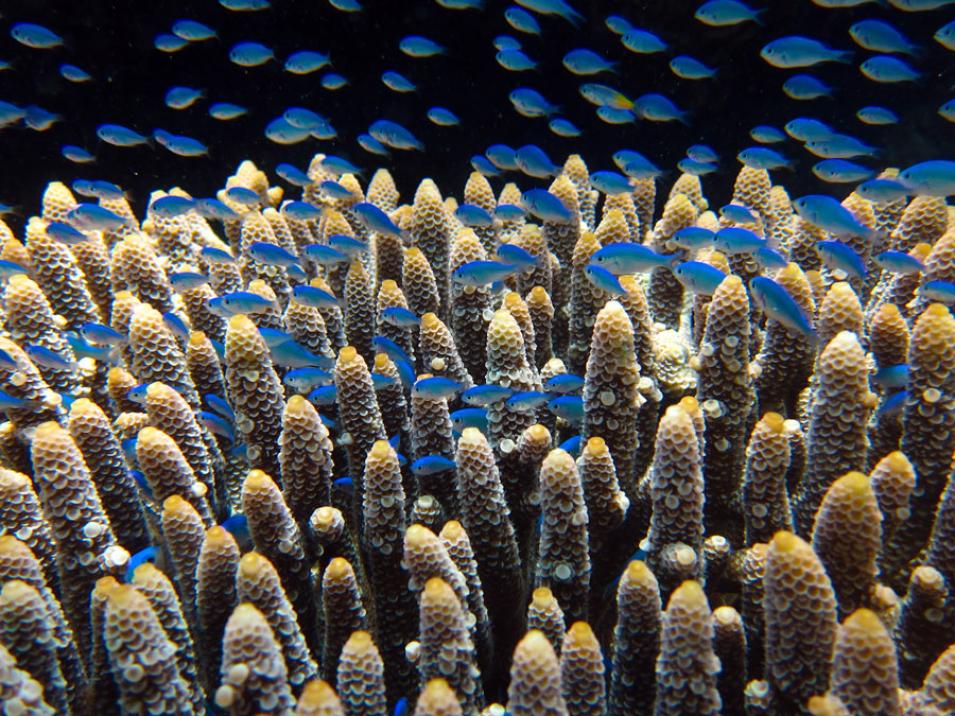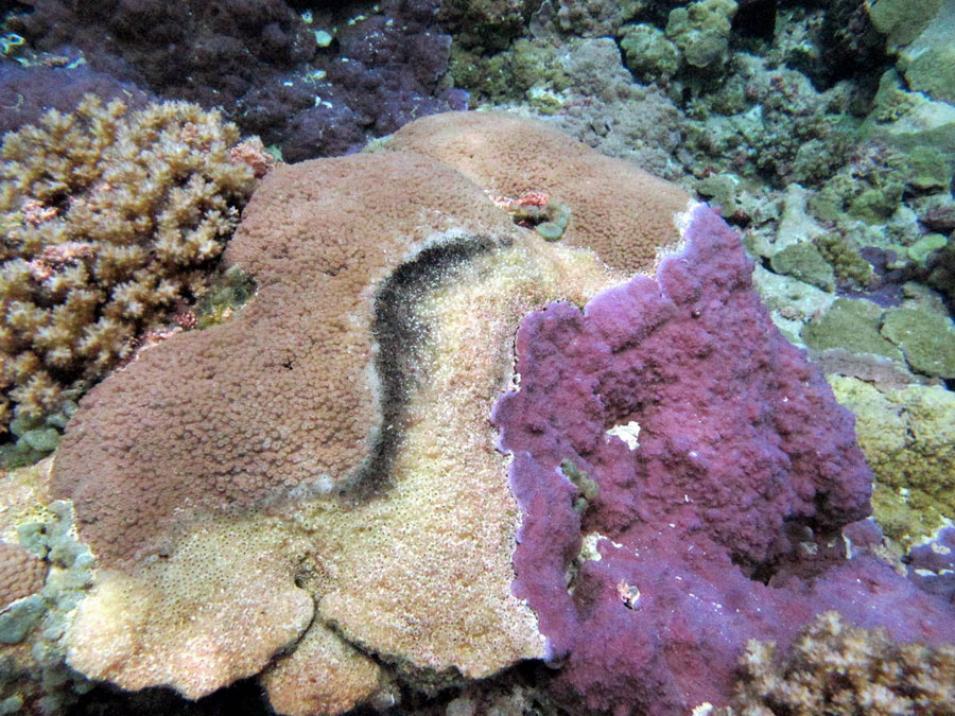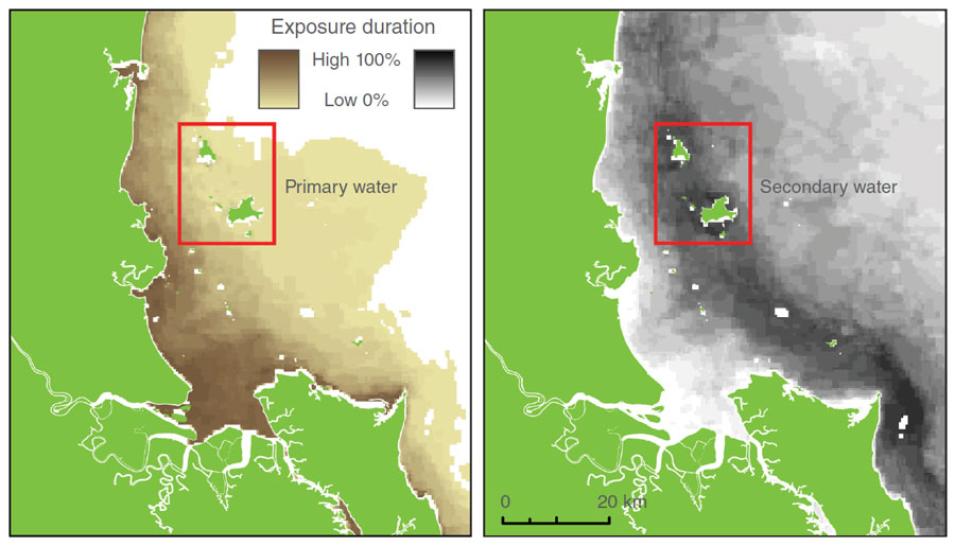Watching the reefs
In hindsight, Lamb should not have been worried about Cyclone Yasi interfering with her research plans. “If the cyclone hadn’t hit some of my sites I would not have thought of collecting the data,” she said. “It came by accident really, and led me down this whole path of research.”
“About 275 million people live within 30 kilometers of coral reefs and rely on them for food, coastal protection, income, and cultural value,” Lamb said. “However, disease outbreaks have caused significant declines in coral cover, with losses of up to 95 percent in some reef regions.”
Reefs are increasingly threatened by coral bleaching, caused by higher water temperatures or extreme weather events. With Earth’s temperature projected to rise, marine ecologists like Lamb will have their hands full and will need to connect more dots double time.
“You do it for the love, that’s for sure,” Lamb said. It’s the same love that keeps divers and snorkelers returning to the reefs.
References
Álvarez-Romero, J .G., M. J. Devlin, E. da Silva, C. Petus, N. C. Ban, R. L. Pressey, J. Kool, J. Roberts, S. Cerdeira-Estrada, A. S. Wenger, and J. Brodie. 2013. A novel approach to model exposure of coastal-marine ecosystems to riverine flood plumes based on remote sensing techniques. Journal of Environmental Management 119: 194-207. doi:10.1016/j.jenvman.2013.01.036
Baith, K., R. Lindsay, G. Fu, and C. R. McClain. 2001. Data analysis system for ocean-color satellite sensors. EOS Transactions of the American Geophysical Union 82: 202. doi:10.1029/01EO00109
Devlin, M. J., E. da Silva, C. Petus, A. S. Wenger, D. Zeh, D. Tracey, J. Alvarez-Romero, and J. Brodie. 2013. Combining in-situ water quality and remotely sensed data across spatial and temporal scales to measure variability in wet season chlorophyll-a: Great Barrier Reef lagoon (Queensland, Australia). Ecological Processes 2: 1-22. doi:10.1186/2192-1709-2-31
Lafferty, K. D., and E. E. Hofmann. 2016. Marine disease impacts, diagnosis, forecasting, management, and policy. Philosophical Transactions of the Royal Society B 371: 20150200. doi:10.1098/rstb.2015.0200
Lamb, J. B., A. S. Wenger, M. J. Devlin, D. M. Ceccarelli, D. H. Williamson, and B. L. Willis. 2016. Reserves as tools for alleviating impacts of marine disease. Philosophical Transactions of the Royal Society B 371: 20150210. doi:10.1098/rstb.2015.0210
NASA Ocean Biology DAAC (OB.DAAC). Level 0 Ocean Color Web. Greenbelt, MD, USA. http://oceancolor.gsfc.nasa.gov/
Petus, C., E. da Silva, M. J. Devlin, A. S. Wenger, J. Alvarez-Romero. 2014. Using MODIS for mapping of water types within flood plumes in the Great Barrier Reef, Australia: towards the production of river plume risk maps for reef and seagrass ecosystems. Journal of Environmental Management 137: 163-177. doi:10.1016/j.jenvman.2013.11.050
Wenger, A. S., D. H. Williamson, E. Da Silva, D. M. Ceccarelli, N. Browne, C. C. Petus, and M. Devlin. 2015. Effects of reduced water quality on coral reefs in and out of no-take marine reserves. Conservation Biology 30: 142–153. doi:10.1111/cobi.12576
For more information
NASA Ocean Biology Distributed Active Archive Center (OB.DAAC)
NASA Moderate Resolution Imaging Spectroradiometer (MODIS)
NASA SeaWiFS Data Analysis Sytem (SeaDAS)
| About the remote sensing data |
|---|
| Satellite | Aqua |
| Sensor | Moderate Resolution Imaging Spectroradiometer (MODIS) |
| Data set | Daily MODIS Level 0 Data |
| DAAC | NASA Ocean Biology Distributed Active Archive Center (OB.DAAC) |
| The Level 0 data were converted into true-color images with a spatial resolution of 500 by 500 meters, using OB.DAAC's SeaWiFS Data Analysis System (SeaDAS). |



